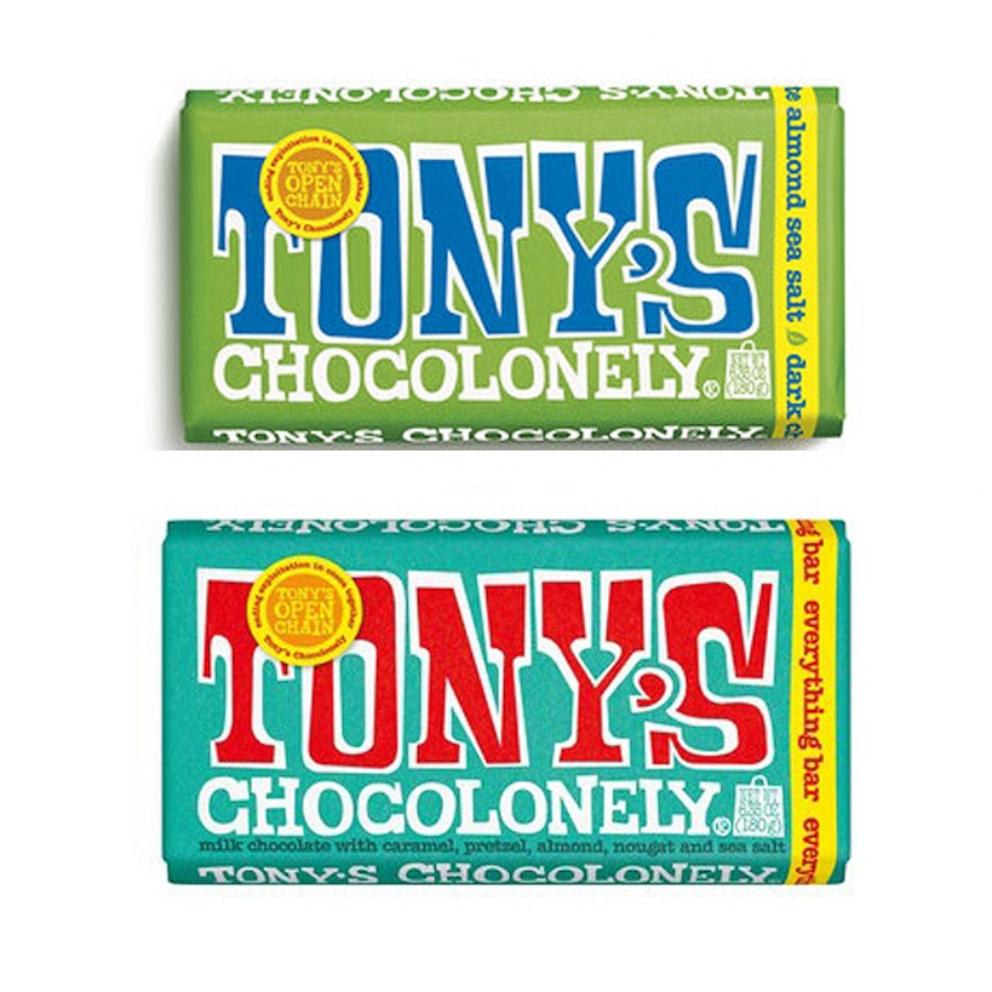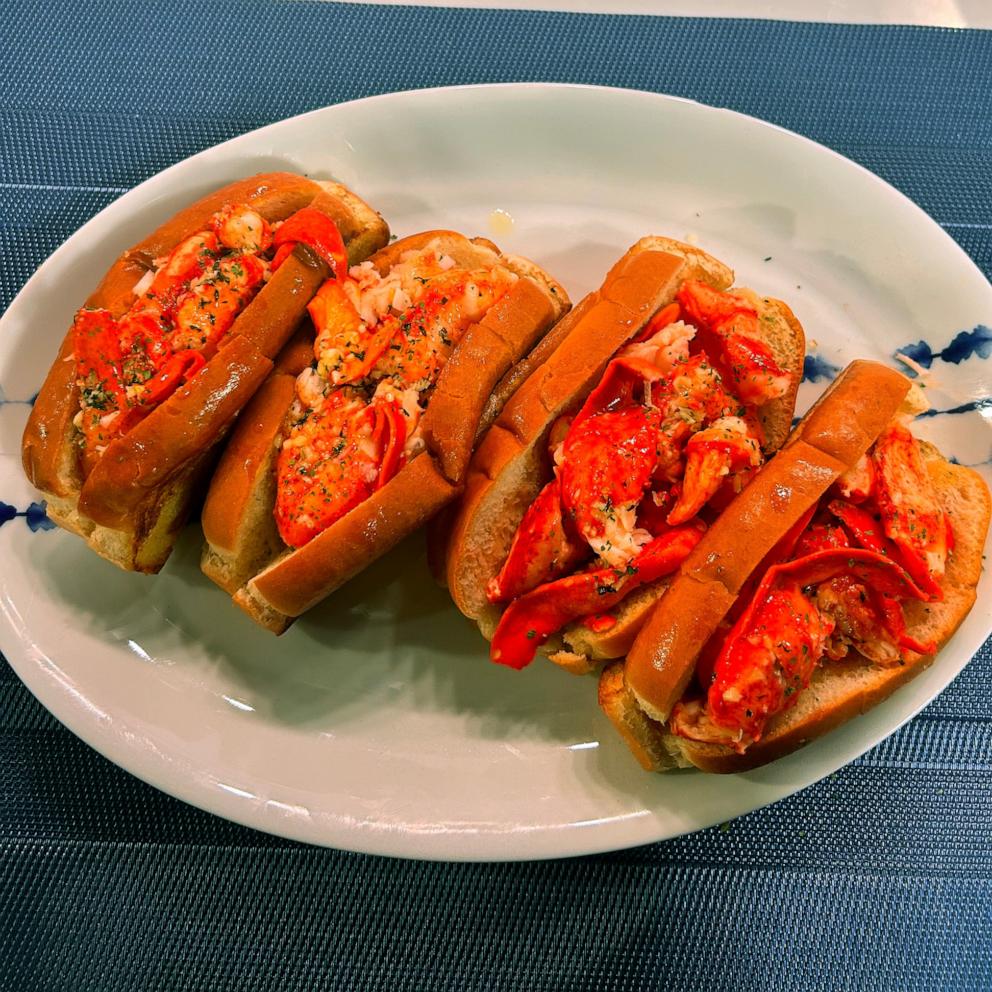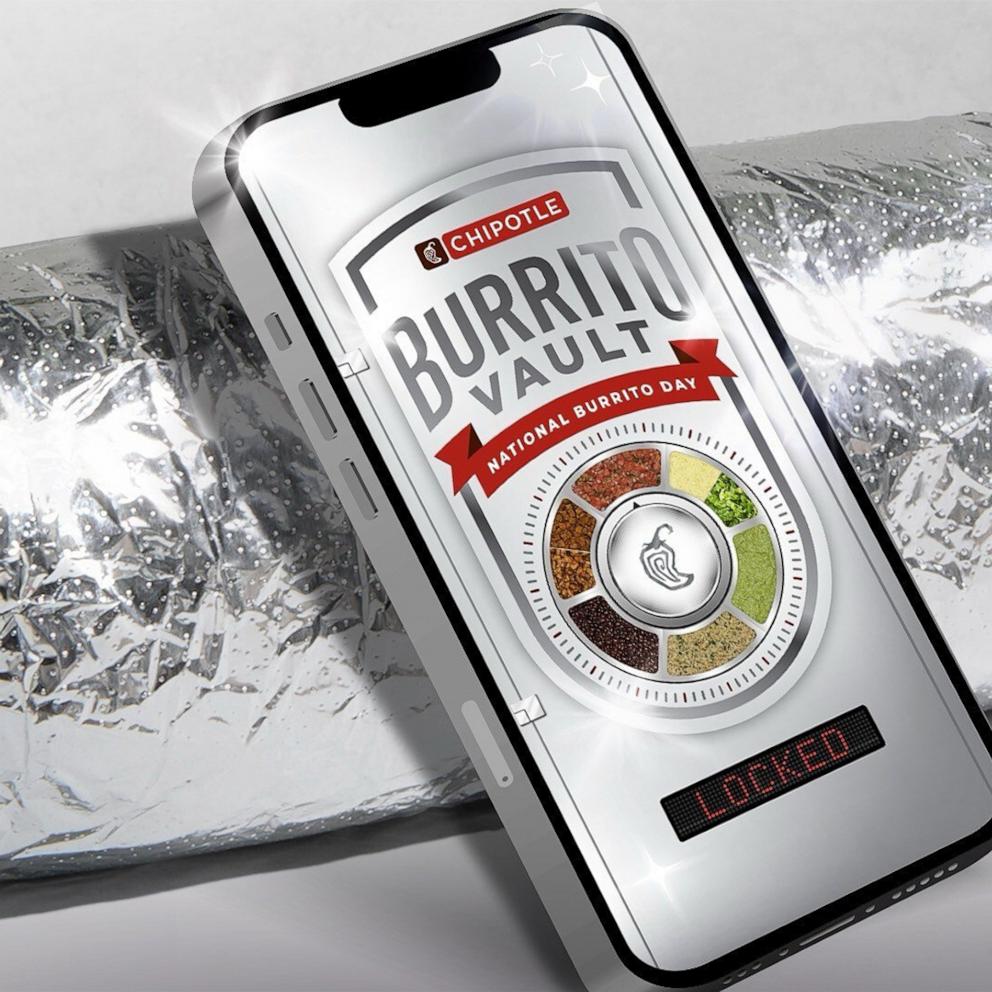Korean immigrants, childhood friends create banchan-style tapas restaurant infused with their Southern roots

If you ask the staff at C as in Charlie "Who is Charlie?" or bear the same name while dining at the Korean-American eatery, you will be met with a shot of sake, compliments of the owners, to feel welcome and toast Korean culture -- and the staff might join in.
Three childhood best friends-turned-business partners opened C as in Charlie in September 2022 after sharing a dream of starting a restaurant in New York City that seamlessly blended their Korean culture and Southern roots.
At their intimate 40-seat dining room filled with quirky nods to famous "Charlie" characters, owners David JoonWoo Yun, Steve JaeWoo Choi and his brother, executive chef Eric JaeHo Choi, offer small plates inspired by their parents' Korean recipes, modified with American ingredients.

"Here at C as in Charlie, we are serving Korean tapas with a Southern flair," Yun told "Good Morning America" of how they've put their identities together on a plate. "At Korean restaurants, we have a bunch of side dishes called banchan. It's very common for Koreans to eat with a bunch of plates on the table, so we wanted to do something similar here."
Yun serves as the general manager alongside Steve Choi who handles finance and operations, while Eric Choi oversees all things culinary.
The trio of Korean immigrants, who first met in Atlanta at age 12, brought the key Korean value of "jeong," which embodies a strong sense of community, to life at their Bowery hotspot. To encourage that sense of community, Yun and the team offer a welcome shot of sake to every guest upon being seated. For those "Charlies" in the house, or anyone who asks the aforementioned question, "Who is Charlie?", the staff will even join in.
"That's our little gesture of saying 'Hey, let's be friends,'" Yun said.

"The whole concept [of jeong] is similar to Southern hospitality," Yun continued. "In Korea, when you move to a new neighborhood, you share banchan ... and that's something we really wanted to bring to New York. A restaurant is more than great food and drinks, it should be serving hospitality, and that's what we very naturally grew up with."
Steve Choi added, "As Southern boys who came to New York, we felt like a lot of New Yorkers lived alone, apart from their family, so we wanted to kind of make this space into a second home where they could be treated and welcomed."
The menu, designed for sharing and sparking conversation with fellow patrons, has a slate of standout dishes, including mushroom bibimbap inspired by one of Eric Choi's childhood staples.
Coming from the kitchen at the Nomad Hotel, Eric Choi told "GMA" that he has "infused a lot of the dishes with the skills I've learned in the past and my childhood memories."

"When my parents were out of the house and working, I would open up the fridge, grab butter and soy sauce and rice and mix them together to eat it -- just like a peanut butter and jelly," he recalled of his go-to convenient comfort food growing up. "I elevated it [for the restaurant] by adding on ingredients like maitake [or hen of the woods mushroom], soft poached egg, pickled shallot and dill."
For Yun, another dish that transports him back to his childhood -- one that customers have been equally obsessed with -- is the restaurant's ox bone marrow cream pasta, which is inspired by his mom's seolleongtang, or ox bone soup.
"When I first came to the United States with my family, I was 10 years old and we went to Salisbury, Maryland," Yun said. "At the time, there weren't a lot of Korean supermarkets, but my parents would always try to cook Korean food at home."
His mom's stewed ox bone soup became a spaghetti-based pasta dish when she was unable to find Korean-style wheat noodles and ended up mimicking the flavors in a new format.
"It tastes like the soup itself, but it's very creamy, more like a carbonara. But it definitely has that ox bone marrow kick to it," Yun said. "That's my favorite dish."
Check out the full recipes below for Yun's beloved pasta and Choi's rich, umami-laden bowl of mushroom bibimbap.
Ox Bone Marrow Cream Pasta
This savory and creamy pasta dish was inspired by Yun's mother's seolleongtang, an ox bone stew that she recreated in the U.S. using spaghetti instead of Korean-style wheat noodles. Yun said he and Eric further developed this dish to eat much like a cacio e pepe or carbonara, with more Korean flavors.
Ingredients
Pasta
120 grams spaghetti
Pasta cream
4 parts ox bone broth
1 part heavy cream
2 parts diced shallots
1 part diced jalapeno, seeded
1 part green scallion, white parts only
Freshly ground black pepper
1/2 tablespoon minced garlic
To garnish
Minced green scallion
Crispy bacon, crumbled
Directions
On a heated saute pan, add extra virgin olive oil to coat the pan and put the pasta cream's veggie mix in to sweat the veggies. Off the heat, place 1/2 tablespoon of minced garlic and sweat until cooked.
For the ox bone cream: You can find ox bone cream in a packaged container at Korean grocery stores and cook according to package instructions. If making from scratch, pour 5 ounces of cream and ox bone broth into a saute pan and cook down until reduced. Add black pepper.
Place spaghetti and a cube of cold butter into the pan with the veggies and ox bone cream and stir until it thickens.
Place the pasta on a plate and garnish with bacon crumbles and minced green scallions.
Mushroom Bibimbap
This updated rendition of a dish from chef Eric Choi's childhood is served up with a fluffy bed of white rice seasoned with mushroom-infused soy sauce, butter-sauteed shimeji and maitake mushrooms, pickled shallots and topped with fresh herbs and a soft poached egg.
Ingredients
White rice (1 cup cooked rice per serving)
Choice of mushrooms (we use maitake, shimeji and button mushrooms)
1 egg
Soy sauce
Mirin
White vinegar
Salt
Sugar
Lemon
Jalapeno
Shallot
Scallion
Garlic
Dill
For the soy braising liquid (button mushroom)
1 carton button mushrooms, scrubbed clean
1 cup (128 grams) soy sauce
1/2 cup (64 grams) mirin
1 cup sugar
1 cup water
1 lemon wheel
1 piece jalapeno
Pickling liquid (shallot)
42 grams white vinegar
5 grams salt
40 grams sugar
50 grams water
Directions
To braise the button mushrooms: Put all the soy braising liquid ingredients into a pot and simmer for about 15 minutes. Remove from heat and reserve the liquid for serving.
To make the pickled shallots: Put pickling liquid ingredients and shallots into a pot and bring to boil. Remove from heat and chill in an airtight container in the fridge.
To make the poached egg: Poach the egg in 145 F water for 4-5 minutes. Cool in an ice bath. Or, to microwave, place 1 cup of water into a mug and add a pinch of salt and crack the egg inside. Microwave for 60 seconds until firm, time may vary depending on power.
To make the sauteed shimeji and maitake mushrooms: Heat a skillet on high heat. Pour in canola oil, just enough to cover the bottom of the pan.
Place mushrooms into the pan and season with a generous amount of salt.
Put 1 cube of butter into the pan and braise the mushrooms for a few minutes until golden.
Once off the heat, place the minced garlic into the pan and stir.
To assemble: In a bowl, place 1 cup of rice and pour over 1 spoonful of the soy braising liquid you made earlier. Add the cooked mushrooms and top with pickled shallot, fresh dill and thinly chopped scallion. Finish with the poached egg.




